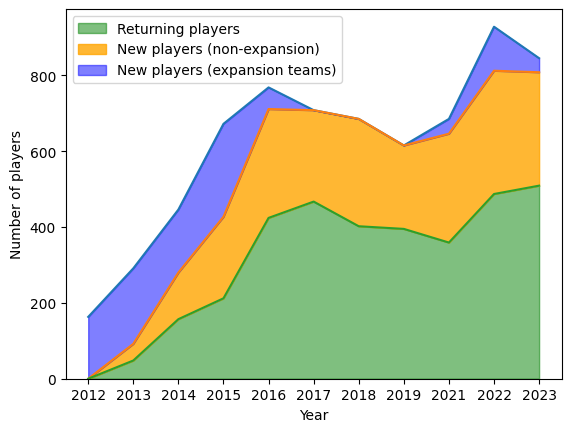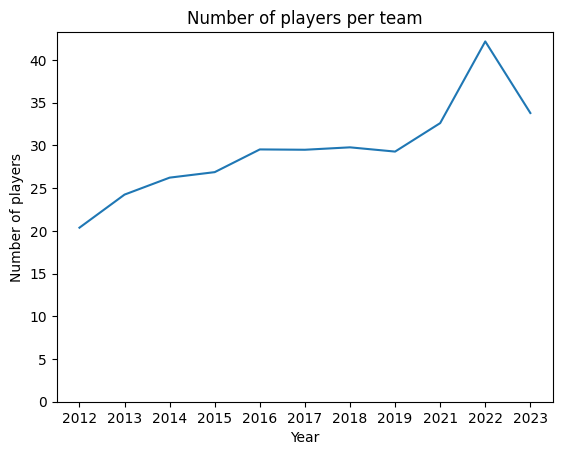Intro
From my point of view, it appears that the talent in the AUDL has risen gradually over the ten years of its existence. The league has managed to draw top players and now most top male players play in the AUDL. In this vein, that means that the talent should be somewhat stable - generally, players should leave the league when they retire or are displaced by newer players, and newer players should enter the league when they hae the requisite skills. Another way to state this is if you are drawing from a larger group of less talented players (as the AUDL did in the earlier years of its existence), there usually can be more roster changes year to year. It seems that with more and more of the top players playing in the AUDL, the talent should become more static; that is, the same players should stay in the league year after year (for the most part).
However, I have no data to back this up. In this blog post I'll examine the stability of the the player makeup of the AUDL.
Teams
The number of teams in the AUDL mostly stabilized after the firs three years. The makeup of the teams in the AUDL is summarized in the below table. I'm taking this data from this great reddit post.
| Year | Teams | Expansion Teams | Folds |
|---|---|---|---|
| 2012 | 8 | 8 | 0 |
| 2013 | 12 | 7 | 3 |
| 2014 | 17 | 6 | 1 |
| 2015 | 25 | 9 | 1 |
| 2016 | 26 | 2 | 1 |
| 2017 | 24 | 0 | 2 |
| 2018 | 23 | 0 | 1 |
| 2019 | 21 | 0 | 2 |
| 2021 | 22 | 1 | 0 |
| 2022 | 25 | 3 | 0 |
| 2023 | 24 | 1 | 2 |
Players
Let's look the composition of the league in terms of players. Thanks to the AUDL stats API, this is fairly easy.
First, we'll look at the composition of the league over time.

A few takeaways:
- The number of returning players has gradually increased
-
The total number of players has increased. I wonder if the number of
players per team has increased. It turns out it has:

- There still are significant numbers of players joining non-expansion AUDL teams every year
Let's look at the percent of players who are new over time.

Surprisingly, when expansion teams are removed, the percent of new players on a team has been relatively stable at about 40% since the league's founding. I would have expected this number to have decreased over time.
In contrast, the NBA has approximately 500 players each season and takes in about 70 new ones, meaning about 14% of the league is new each year (note that this isn't exactly right as there are some oddities in terms of bringing players up from the G-league, etc, but they are correct enough for our purposes).
Conclusion
My intuition was wrong. The AUDL's talent pool has not gotten more stable over the course of its existence.
I still think this could change moving forwards. The AUDL has not managed to get all of the top talent in the US, and their franchises still fold and spring up anew regularly. As they move towards more franchise stability and contracts keep getting sweeter, I would expect the talent to be less in flux moving forward. However, only time will tell.
